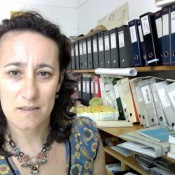Status das populações de cracas comercialmente exploradas Megabalanus azoricus (Pilsbry, 1916)
This project is a result of the need to fill the gap of knowledge on the biology and ecology of the commercially harvested barnacle in the Azores, Megabalanus azoricus (Pilsbury, 1916) and at the same time answer the call from OSPAR that reported this species as threatened and in need for an urgent study. This project attempts to study and integrate in a multidisciplinary approach the classical biological and ecological aspects not only with new stereological and genetic techniques but also with new applications of spatial and image analysis to the scale of organisms and populations, therefore providing a scientific based knowledge of the species, at several scales, in order to enable the evaluation of the state of the resource and to indicate ways for its sustainable exploitation. In order to attain this goal the work will be developed under six main complementary tasks. In a first phase, the first four tasks will concentrate on what concerns the sampling for market evaluation, population biology and ecology in São Miguel. During the first year fieldwork will also be carried out to Flores and Terceira in order to obtain comparative data for São Miguel and to collect animals for the genetic studies that will start on the second year. Sampling at sea will be done, whenever possible (including studies on growth and population structure), using non-destructive techniques as underwater photography coupled with the use of image analysis software. Location and densities of populations will be included in a GIS basis (Arcview). To study the reproductive and maturation cycles of this barnacle, it will be necessary to collect some animals from selected populations in São Miguel. To minimise harvesting, tissue from the same animals will be used for the genetic analysis. Histological and stereological analysis of gonads of several size class organisms, obtained in different seasons, will enable the description of the reproductive cycle of M. azoricus. For larval description, it will also be necessary to breed the organisms from the nauplius to the cypris stage and to do the necessary observations on morphology using optical and SEM techniques. Genetic analyses, performed on Azorean barnacles (including samples from Flores, Terceira and São Miguel), will provide insights on species taxonomic status (by comparison with specimens from Madeira collected by local researchers) and results on genetic structure and stock identification. The genetic work will be carried out on populations selected on the basis of the preliminary results from previous tasks.\nThe final task will integrate and analyse results obtained in the other tasks in order to study the sustainability of the resource and to draw guidelines for its exploitation. These results will be shared with interested local public, organizations, stakeholders and socio-economic parties responsible for conservation and exploitation of this species.\n
Maria Ana Manso Dionísio, Teresa Paula Gonçalves Cruz, Armindo dos Santos Rodrigues, Mário Rui Rilhó de Pinho
